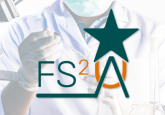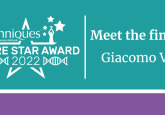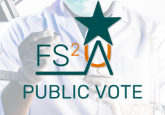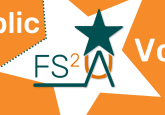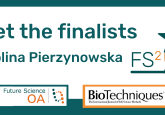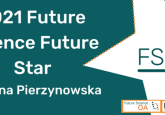Meet the stars: Pooja Shree Mishra
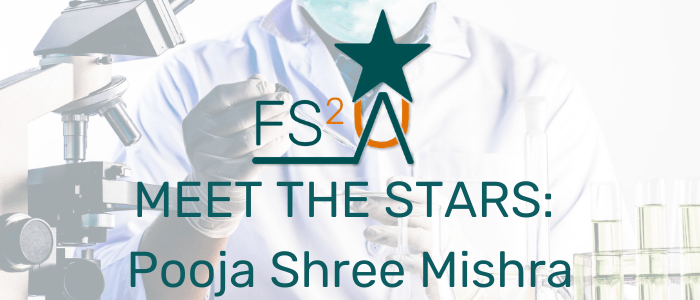
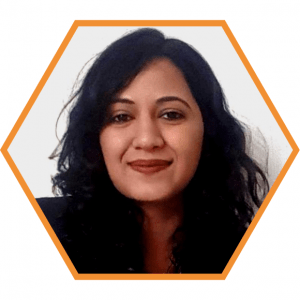 Meet the stars of the 2020 Future Science Future Star Award.
Meet the stars of the 2020 Future Science Future Star Award.
Pooja Shree Mishra is a Researcher studying amyotrophic lateral sclerosis (ALS) at the CERVO brain research center (Quebec City, Canada). She is a finalist in the Future Science Future Star Award 2020, run by BioTechniques and Future Science OA. Here she discusses her career so far, as well as her aims for the future.
Please tell us about your career to date
I started my career with a PhD. program in Neurophysiology from National Institute of Mental health and Neuroscience (NIMHANS), India under the supervision of Dr. T R Raju. There, I studied the role of glial cells and inflammation in the pathology of ALS. After graduating in 2016, I moved to the laboratory of Dr. Jean Pierre Julien as a postdoctoral researcher, where I continued working on delineating the pathology of ALS. While I previously worked on understanding glial inflammation through cellular approaches, I have now expanded my research to investigate changes in the neurons as well as muscle tissues, adopting an overall, multi system approach. I am also investigating the effects of a novel drug on the reversal of ALS pathology. Apart from research, I have also been associated with various science outreach programs in different countries and languages.
What made you choose a career in your field?
Growing up, the work of Jane Goodall immensely fascinated me, and in a way inspired me to tread a path that at that time was unknown to my family, community, or town. Realizing my passion for the brain and behavioral science during my teenage years, I aspired to become a neuroscientist. I have followed my passion for last 10 years and the pursuit has been rewarding every single day ever since. However, my constant motivation to continue working on neurological disorders, esp. ALS stems from witnessing the hardships of ALS patients during my graduate research at NIMHANS. That provided me a sense of purpose and urgency to help in my capacity for a cure for ALS.
When you have a sense of purpose and haven’t felt bored in a decade doing what you do, you know you are where you are supposed to be.
What are the main highlights of your career so far?
My investigations converging at basic, clinical & translational research resulted in eight research articles impacting >160 different studies so far, winning me scholarships, stipends, travel awards and invited talks.
We proposed Chitotriosidase1 (Chit-1) as a novel ALS biomarker for the first time. My work showed that this enzyme was expressed by microglia. The impact of Chit-1 has since been validated in independent studies and more than 300 articles have referenced Chit-1 in the context of ALS.
My research has strengthened the hypothesis of a misguided inflammatory cascade leading to disease progression. The investigations were covered by news outlets and have impacted more than 40 research studies in course of 3 years.
A reliable animal model is warranted for the sporadic variant of the disease that affects the majority (~90%) of the total ALS patients. During my postdoctoral research, I successfully established a mice model for sporadic ALS and demonstrated therapeutic effects of a novel drug for ALS.
What is the most difficult challenge you have encountered in your work and how did you overcome it?
I had a humble beginning in a small Indian town with little academic exposure and several cultural constraints on women. With determination and the support from my family, I was able to break those barriers and pursue higher studies.
Since I was aged 20, I suffered from ‘autoimmune thyroiditis’ and ‘Episodic Type-2 Ataxia’ (symptomatic)-two lifelong disorders that disrupted my physical mental & emotional balance.
Despite this, I did not let my academic career get affected and graduated with a ‘Certificate of Merit’ for my master’s degree; won a national, merit-based scholarship for PhD; and got a postdoc without any career gap.
Workplace harassment coerced me into abruptly change my research, within 11 months of my first PhD. registration. However, learning from many other incredible women, I kept on going, despite all.
My perseverance and the extraordinary support that I received from my supervisors, colleagues and family steered me through it all.
Which one publication of yours would you say best highlights your career to date?
Mishra PS, Boutej H, Soucy G et al. Transmission of ALS pathogenesis by the cerebrospinal fluid. Acta Neuropathol. Commun. 8, 65 (2020).
To successfully mimic sporadic ALS in mice model earlier unavailable, we combined human ALS-CSF mediated toxicity and over-expression of human TDP-43, in mice.
This model not only demonstrates damage to neurons and glial cells, but also to the muscles and clinical features associated with ALS and co-morbid dementia. Here, we were also able to provide proof for the disbalance in the neuronal energy metabolism and mitochondrial clumping, which is a novel and rapidly evolving concept for ‘neurodegenerative diseases.’
The study has led to two active collaborations towards drug development and treatment approaches and has been picked up by different news outlets.
I have chosen this study also because this study has been built upon my past research thus far, while imbibing concepts from other mechanisms being implicated in ALS.
What are your main aims for the future?
I plan to find a cure for ALS in my lifetime. For that it is crucial to have an appropriate model system for sporadic ALS which has been accomplished in the first phase of my long-term vision for ALS research.
In order to address the multifactorial nature of ALS pathology, a major approach would be to explore common links between the different pathways affected in ALS. Based on my present research, I have been able to pinpoint specific pathways and processes in ALS-CSF as well as in microglia and neurons due to ALS pathology. I plan to further approach the from these multiple vantage points and converge on one, or more likely, a spectrum of combinatorial solutions.
Parallel to it and equally crucial, I plan to adopt science communication as an integral part of my career curriculum. I have already been engaged in various outreach programs and wish to continue and further expand on it, by encouraging young girls from unprivileged households to pursue their passion in science.
Where do you hope to see yourself in 5 years?
In 5 years, I wish to see myself conducting research independently and autonomously. I have research plans ready to be materialized and I hope to secure grants and tenure to realize these. Concomitantly, I plan to have my initiatives for science outreach and mentoring in place. I absolutely enjoy what I currently do and in next 5 years, I plan to keep and expand at it, albeit more autonomously.
Why do you feel you deserve this award?
In my experience so far, there is no universal scale to measure everyone’s accomplishments. The measure of success than becomes a complex, subjective concept based not only on what an individual has achieved, but how farther one has come from where one began. I see myself as someone who has worked hard to overcome physical, social and cultural barriers, even if that meant putting in double the efforts on an average. While my struggles in research have been unique, as have been everyone else’s, I believe I deserve this award not based entirely on how far I have come, but how far I wish to go, and how many lives intend to create an impact on with my research, outreach and mentorship. Moreover, if selected, I intend to put this recognition to a meaningful use by building credibility, form appropriate collaborations, engage stakeholders and drive momentum towards ALS research within and outside the scientific community.
Nominated by: Olga Pena (Canadian Food Inspection Agency) and Prof. T.R. Raju (National Institute of mental health and Neurosciences
Twitter: @PoojashriMishra
Instagram: stem_nerd
LinkedIn: Pooja Shree Mishra
